Since long ago have I known you.
Those lives I remember and you do not.
Together we have seen the light of heaven and the sorrow of falling from grace...
The hollow echo of Hell and the agony of being apart from your beloved.
The truth beyond Heaven and Hell.
The spirit of man -- his run through the fire and his resurrection.
from Lucifer's Halo by Joseph Michael Linsner
I don't know when I first learned the story of Lucifer. By the time I remember thinking about the story it was a known commodity, the details existing independently of a source. My earliest opinions were not in line with the opinion I felt I should have. Lucifer should be feared, the adults said, and embraced, the youth said, but I was struck by a profound sense of pity. I couldn't imagine loving someone as much as the stories said Lucifer loved God before being cast away by that self-same figure for loving them too much. I wondered, in the simple thoughts of a child, if I could deliberately go to Hell and try to cheer him up. He must be sad, I thought, but I also thought Hell seemed like a terrifying and painful place and I wasn't sure I could or would endure such pain to try to comfort someone who might not even want that.
As an adult, this primal relationship seems a recipe for mutual abuse. One loving too much, the other entirely involved in something new; one demanding, the other rigid. I see in it the seeds of destruction - love turned to hatred but retaining it's violent passion. Even people drawn in via pity - such a condescending emotion! - simply feed into the cycles of abuse, sublimating ourselves into the role of audience for self-involvement. It's with these thoughts I approached Fox Nacht's Mourningstar - a pilgrimage around the story of Lucifer, re-imagining it through new eyes. It starts high in a gray sky with a quote from William Godwin's Enquiry into Political Justice and leads down an impossible bridge to the first shock of the walk - a drop from heaven to the earth, landing in a pile of discarded wings.
I've never understood why demon wings were different from angelic ones - they were all on the same side, once, and our actions mark us in much more subtle ways than changing our wings.
There are several paths from the half-nest of a landing spot. One off to the side, a little harder to see than the rest, goes up a hill to the Mourning Star himself, caught in mid-fall moments before impact. His wings are beginning to grow spikes and his body is caught in a rictus of agony - rigor mortus without even having died. In the story he meets the ground but in the image he never does - the moment is frozen just before he touches down to his new level. It's a moment which usually does not invite contemplation, but by being frozen on such a scale it invites us to consider the moment before the consequences of our actions fully land, before the screaming body impacts the ground. This is the only direct portrayal of Lucifer, Satan, the concept from mythology which has been reformed and re-imagined across three religions and over a millennia; everywhere else he exists in reproduction alone, visible through the reactions of the people to who they think he is.
The other direction leads to a crossroads, literally and definitially. Historically, crossroads were a source of confusion and distraction. Robert Frost's The Road Not Taken tells the story of a crossroads which becomes significant only in the retelling of the story. In life, many crossroads can't be revisited but the value of art is to give us access to moments which couldn't exist in reality - in this case the choice between three destinations on the same theme but different manifestations. The leftmost fork takes us to the tree of judgement, where Christian's say Satan first acted. The fundamental conflict of innocence versus knowledge exists in every life, and everyone has a perspective on what speaks to innocence and what to knowledge of Good and Evil.
The middle path leads to the Left Handed Path; inspired by Satan's rebellion rendered poetic by John Milton in Paradise Lost and the rebellion against Divine Kings in France, they focused on the importance of having an opponent to overwhelming power - a mindset which plays itself out now in the Argument to Moderation which is central in the US Political System. It also contributes to the fascination to the anti-Hero and the stories of people as they fall prey to all of the temptations of the world and are destroyed by them. They were named thus by Robert Southey in A Vision of Judgement (subsequently satirized by Lord Byron)
"The school which they have set up may properly be called the Satanic school; for though their productions breathe the spirit of Belial in their lascivious parts, and the spirit of Moloch in those loathesome images of atrocities and horrors which they delight to represent, they are more especially characterized by a Satanic spirit of pride and audacious impiety, which still betrays the wretches feeling of hopelessness wherewith it is allied. ... There is no maxim more frequently enforced by Machiavelli, than that where the manners of a people are generally corrupted, there the government cannot long subsist,..a truth which all history exemplifies; and there is no means whereby the corruption can be so surely and rapidly diffused, as by poisoning the waters of literature."One wonders what Mr. Southey would think of our modern era and the recognition of Satanism as a valid religion by governments around the world.
The right path leads to a second fork - this one on land.
To the left, high on a ridge, a set of rough horns wait and coiled around the definitions for "faith" and "belief". The teleport pad before the horns takes one up to a skybox of more modern history - the Satanic Ritual Abuse panic of the USA in the 1980s; Norwegian Black Metal, which was less about Satanism per se and more about rejection of Christianity; and the modern atheistic and theistic forms of religious Satanism. Theistic Satanism has a blurry past which often overlays other religions, but the atheistic form has a creation date in the 1960s in the hands of Anton Le Vay. Ironically, the pentagram and a lot of the rituals associated with Satanism now are Christian at their root and come to the modern era via Ceremonial Magic, a la the sometimes Satanically viewed Aleistar Crowley, who wrote in the 1800s: "Do what thou wilt shall be the whole of the Law. Love is the law, love under will."Crowley also is at least partly responsible for the conflation of Egyptian and Christian mythology which dogs Ceremonial magic to this day.
To the right, lower on the ridge and in a protected lee of the mountains behind, is a small reading room with three references - John Milton's Paradise Lost, Lord Byron's Cain, and William Blake's The Marriage of Heaven. Two of the three lead to links, while the first Book of Paradise Lost is reproduced - a good place to rest while contemplating three men's views of a Fallen Angel.It's also a place and time to consider subtle differences in typing - Morningstar versus Mourningstar. What is there to mourn in the fall of a Light Bringer. What is there to mourn in the existence of an Adversary. What happens in the moment before consequences arrive, in the energy of opposition. What do we know about Good and Evil, and how do we tell them apart? Simple questions, but a lot of the answer depends on where we stand.
( More pictures here. )
Credits:
Location: Mourningstar
Windlight Settings: Sim Default
Water Settings: Sim Default
Photographed by Deoridhe Quandry
Post processing: Cropping

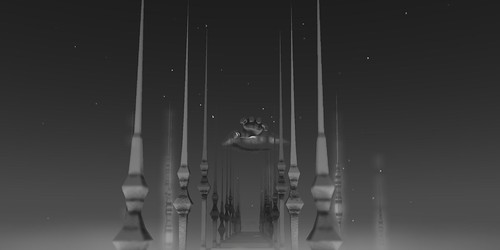


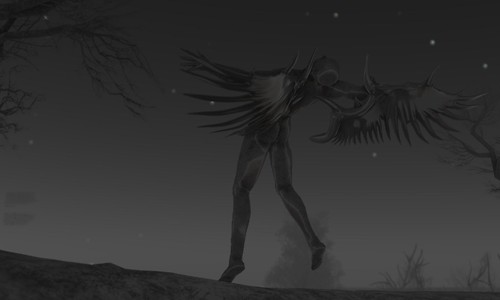
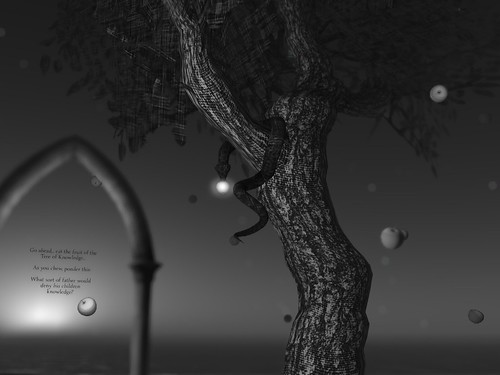
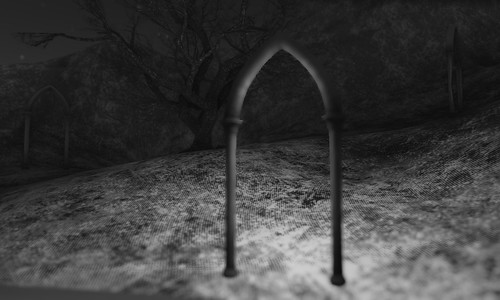

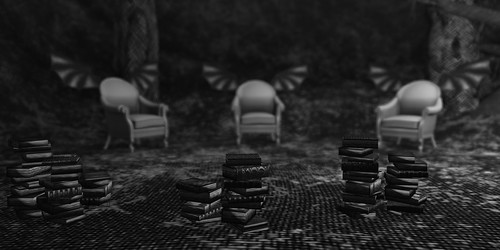
No comments:
Post a Comment